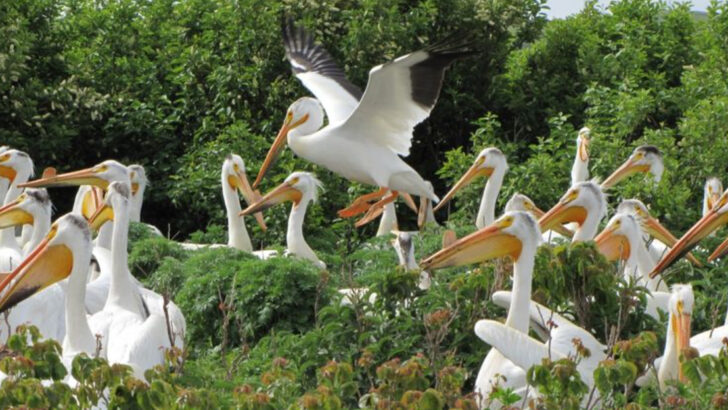Every year, a remote corner of North Dakota turns into a living, flapping, honking spectacle straight out of a nature lover’s dream.
At Chase Lake, thousands of wild pelicans swarm the sky and the water like a feathery storm, gathering in a frenzy that feels almost otherworldly. It’s not just a few dozen birds lazily floating around—this is a full-blown avian takeover.
Wings span wide, beaks snap open, and the air buzzes with the electric thrill of survival, territory, and family. These massive white giants turn Chase Lake’s barren islands into bustling nurseries, where the drama of nature unfolds with no script, no apologies.
If you’ve ever wondered where the wild things truly are—this is it.
Chase Lake doesn’t just shelter pelicans.
It celebrates them.
And you won’t believe what it looks like when tens of thousands take flight at once.
Pelican Population Boom
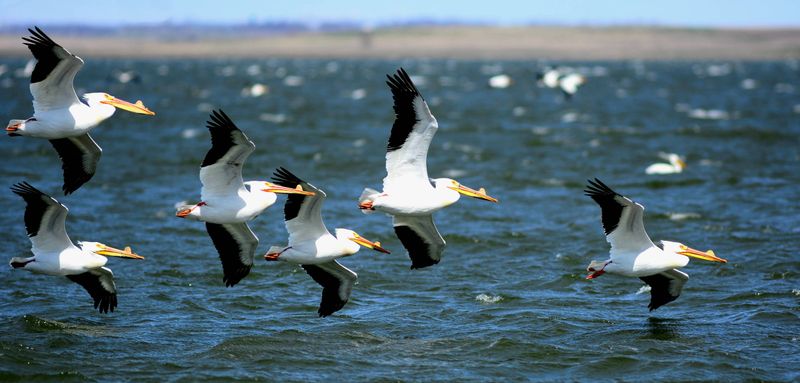
Imagine skies filled with thousands of white pelicans, their wings stretching wide as they glide effortlessly over Chase Lake. Every summer, these magnificent birds gather in astonishing numbers, creating an awe-inspiring visual display. The pelicans’ elegant flight and synchronized movements resemble a choreographed dance, captivating onlookers. Their presence is not just a visual treat but also a crucial ecological event, as these gatherings play a vital role in their breeding cycle. Witnessing this natural phenomenon offers a rare opportunity to appreciate the beauty and significance of pelican gatherings.
Historical Significance
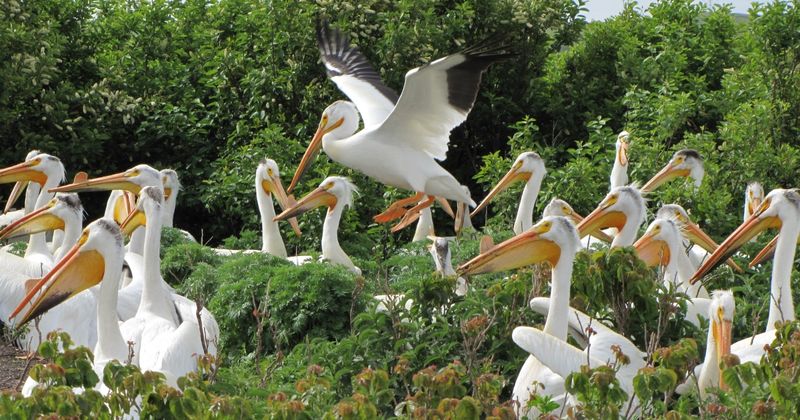
Chase Lake’s history with pelicans dates back decades, serving as a reliable haven for these birds. The lake’s designation as a National Wildlife Refuge in 1908 underscores its importance in preserving avian habitats. It’s fascinating to consider how early conservation efforts helped safeguard these pelican populations. Historical records reveal intriguing stories of dedicated conservationists who championed the protection of Chase Lake. This legacy continues today, with modern conservation strategies ensuring that future generations can witness the splendor of these pelican gatherings.
Ecological Importance

Chase Lake’s ecosystem is a vibrant tapestry of life, where pelicans play a pivotal role. Their nesting activities contribute to nutrient cycling, enriching the surrounding environment. Beyond pelicans, the lake supports a variety of bird species, each adding to the area’s biodiversity. Observers may spot herons wading through the shallows or hear the calls of diverse waterfowl. This dynamic environment underscores the interconnectedness of species within this refuge. Protecting Chase Lake not only benefits pelicans but also ensures the survival of countless other wildlife.
Pelican Behavior
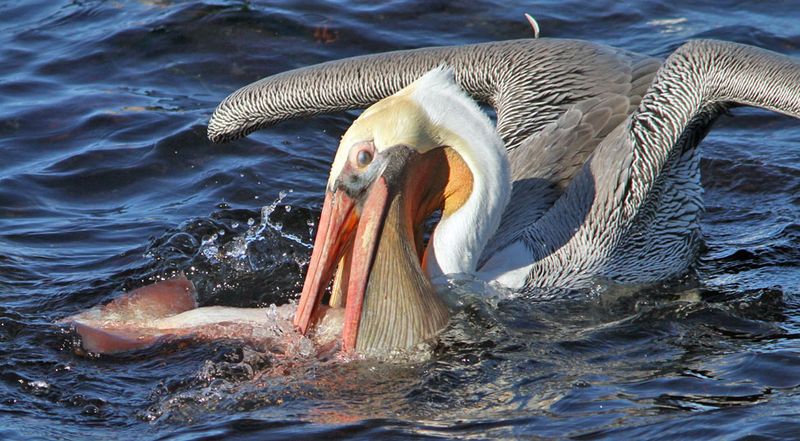
Pelicans at Chase Lake exhibit fascinating behaviors that captivate birdwatchers. Their fishing technique is a marvel to observe; pelicans use their expansive bills to scoop up fish, often working in groups for efficiency. Watching them glide across the water’s surface before plunging in for a catch offers insight into their adept hunting skills. These social birds communicate through a series of unique vocalizations, adding another layer to their intriguing nature. Each visit to Chase Lake reveals new aspects of pelican behavior, making every encounter unique.
Conservation Efforts
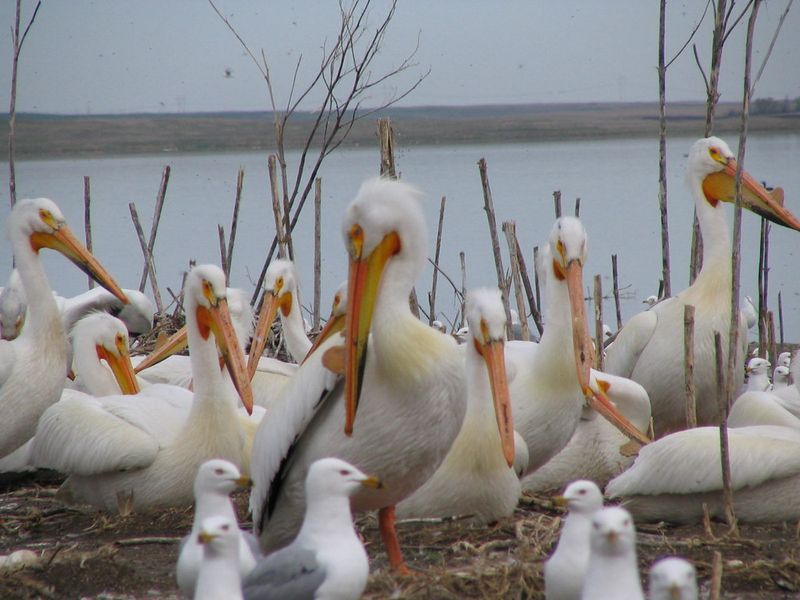
Chase Lake stands as a testament to successful conservation efforts aimed at protecting pelican habitats. Collaborative projects between government agencies and conservation groups focus on maintaining the ecological balance of this refuge. Researchers work tirelessly to monitor pelican populations, employing innovative methods to ensure their continued prosperity. Community involvement is equally vital, with local residents participating in conservation initiatives. These efforts have led to a flourishing pelican population, demonstrating the power of unified action in preserving natural treasures like Chase Lake.
The Pelican Parade
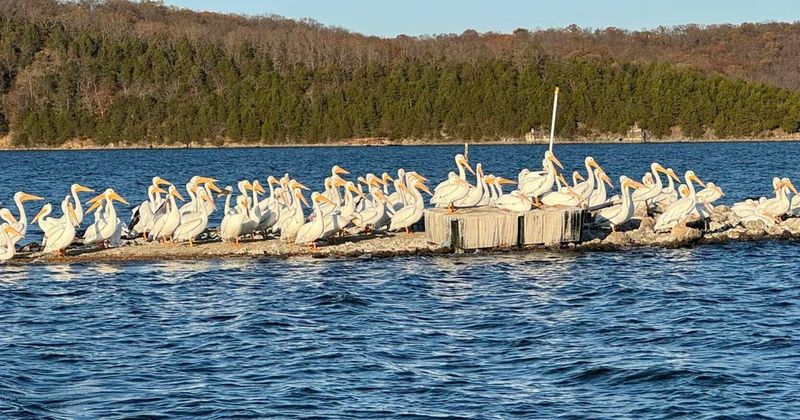
In the early morning light, a whimsical parade of pelicans makes its way along the lakeshore. Picture it: these majestic birds strutting in unison, some even looking like they’re leading with a metaphorical top hat and cane.
Children and adults alike gather to watch this natural spectacle, their eyes wide with wonder. It’s not an organized march but a spontaneous exhibition of nature’s choreography.
While pelicans may not literally wear hats, the sight of their synchronized movement is a captivating performance that seems almost theatrical. Nature’s own parade, with no rehearsal needed!

